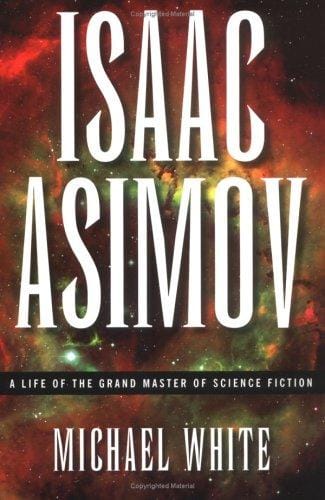Blood Music: How Greg Bear Redefined Biotechnology in Science Fiction
An in-depth look at Greg Bear's Blood Music, covering plot, themes, biotech speculation, cultural impact, and why it remains a landmark in science fiction.

Introduction: Why "Blood Music" Still Matters
When Greg Bear’s novel "Blood Music" burst onto the science-fiction scene in 1985, readers were stunned by its fearless blend of hard science, horror and philosophical speculation. Few books before or since have so vividly imagined the consequences of giving living cells the ability to think, learn and reproduce at lightning speed. Nearly four decades later, the story remains as relevant as ever, resonating with contemporary debates about genetic engineering, synthetic biology and the ethics of artificial intelligence.
In roughly 800 words, this article explores the plot, core themes, scientific vision and lasting cultural impact of "Blood Music." Whether you are a long-time fan, a newcomer searching for your next genre read or a student researching biotech fiction, the insights below will deepen your appreciation of Bear’s groundbreaking work.
Plot Overview: From Lab Experiment to Global Transformation
At the heart of the novel is Vergil Ulam, an eccentric researcher fired from a California biotechnology firm for conducting unsanctioned experiments on lymphocytes—white blood cells he has genetically altered to possess micro-processors made of organic matter. Facing dismissal and the destruction of his research, Vergil decides to smuggle the modified cells out of the lab in the most direct way possible: he injects them into his own bloodstream.
The choice proves catastrophic and transcendent. The so-called "noocytes" rapidly evolve inside Vergil, enhancing his body and mind before escaping into the wider population. As the noocytes spread from person to person and eventually merge across entire ecosystems, they rewrite the genetic code of life on Earth, assimilating humans into a collective intelligence. What begins as a covert lab mishap becomes an awe-inspiring, terrifying metamorphosis that challenges the boundaries between individual and collective, organic and digital, life and death.
Major Themes: Identity, Consciousness and the End of Boundaries
The Fragility of the Self
"Blood Music" interrogates the notion that human identity is fixed and impermeable. Once the noocytes transform their hosts, personal memories and emotions dissolve into a communal mind. Bear asks whether individuality is an evolutionary fluke rather than a permanent feature, urging readers to consider how technology might fracture—or expand—our perception of self.
Science Without Foresight
Bear’s cautionary tale scrutinizes the hubris that can accompany scientific innovation. Vergil’s brilliance is matched only by his reckless disregard for safety protocols, corporate oversight and ethical review. The resulting disaster illustrates what can happen when breakthroughs outpace reflection, a message that feels even more urgent in today’s CRISPR and AI revolutions.
Transcendence and Cosmic Evolution
Despite its apocalyptic tone, the novel is not merely a doom-and-gloom narrative. Bear offers a vision of transcendence in which humanity evolves into a higher order of being. The final sections suggest that consciousness itself might be the universe’s ultimate building block, capable of reorganizing matter into intricate patterns beyond human comprehension. This blend of terror and wonder elevates "Blood Music" above typical pandemic thrillers.
Ahead of Its Time: Biotechnology and Nanotech Vision
Although the term "nanotechnology" was still niche in the mid-1980s, "Blood Music" effectively predicted a world where microscopic machines—here organically engineered cells—could manipulate matter at the molecular level. The novel’s speculative science aligns with contemporary research into DNA computing, smart drug delivery and self-assembling materials. Bear’s foresight highlights the power of science fiction to inspire real-world innovation by dramatizing possibilities that lab experiments have yet to reach.
Additionally, the book offers an early fictional exploration of what we now call "bio-digital convergence," in which biological systems interface seamlessly with information technology. By reimagining lymphocytes as living computers, Bear foreshadowed modern discussions about wetware implants, brain-computer interfaces and programmable cells.
Influence and Legacy in Modern Science Fiction
"Blood Music" won the Nebula and Hugo Awards and has been cited as a seminal influence by authors such as Neal Stephenson, Peter Watts and Jeff VanderMeer. Its melding of visceral body horror with grand speculative philosophy paved the way for the "biopunk" subgenre, which centers on genetic manipulation and post-human evolution. Works like Paolo Bacigalupi’s "The Windup Girl" and the "Mosaic" series by Octavia Butler echo Bear’s themes of biological upheaval and societal reckoning.
Beyond literature, the novel’s ideas have permeated film, television and video games. Elements of Bear’s noocytes can be found in the Swarm intelligence of "StarCraft," the Grey Goo scenario in nanotech theory and the body-melding horrors of movies like "Annihilation." Each homage reinforces the story’s enduring capacity to challenge and disturb audiences.
Conclusion: Reading "Blood Music" Today
Greg Bear’s "Blood Music" is more than a classic novel; it is a living conversation about the promises and perils of manipulating life at its smallest scales. Its exploration of identity, collective consciousness and uncontrolled innovation remains strikingly contemporary, making the book essential reading for scientists, futurists and science-fiction lovers alike. As biotechnology and computing continue to converge, the questions Bear posed in 1985—Who are we? What might we become?—will only grow louder. Revisiting "Blood Music" today offers both a warning and an invitation: a warning against reckless creativity and an invitation to imagine new forms of existence beyond the limits of individual flesh.



